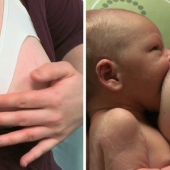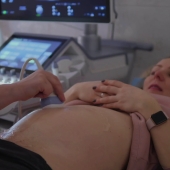Most babies are usually lying head down by the end of pregnancy. This makes birth more straightforward, as the largest part of an unborn baby - its head - is born first.
About 3% of babies are not head down at the end of pregnancy and remain in a ‘breech’ position. This article covers why some babies are breech; whether a breech baby can be turned before being born and giving birth to a breech baby.
Most babies who are in the breech position at 32 to 34 weeks turn themselves into a headfirst position. If your baby is still breech at 37 weeks, it may be possible for an obstetrician to turn your baby using a technique called external cephalic version (ECV).
In this procedure hands are placed on the mother's abdomen around the baby. The baby is moved up and away from the pelvis and gently turned in several steps from breech, to a sideways position, and finally to a head first presentation.
External cephalic version performed before term may decrease the rate of breech presentation compared to external cephalic version at term, but may increase the risk of preterm delivery. There is some evidence to support the use of tocolytic drugs in external cephalic version. Use of intravenous nitroglycerin has been proposed.
About video: External cephalic version (ECV) performed at the Catharina Hospital in Eindhoven, Netherlands.
- 4579 views













